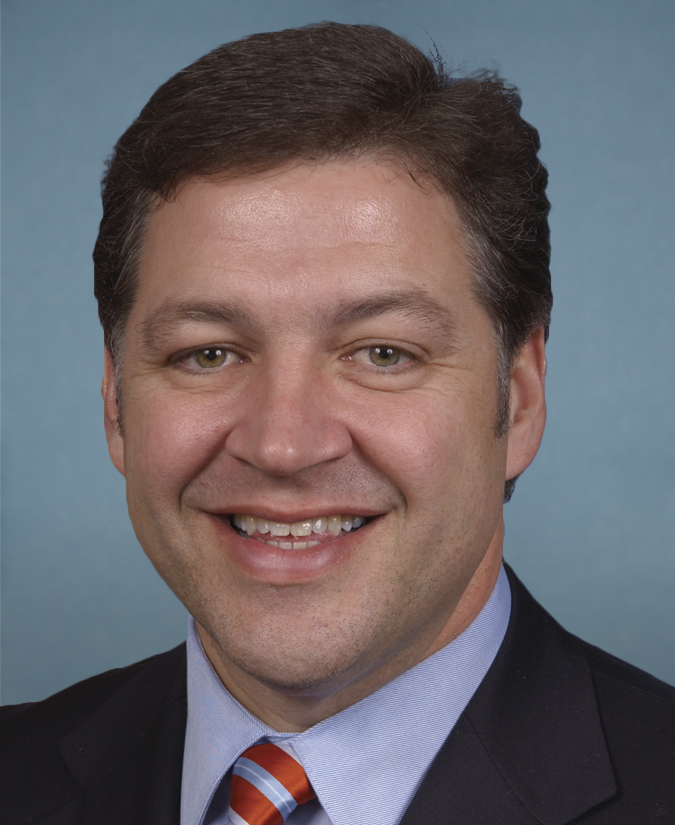
HB 2845 Pipeline Safety, Regulatory Certainty, and Job Creation Act of 2011
US Congress 112th Congress
Pipeline Safety, Regulatory Certainty, and Job Creation Act of 2011
HB-2845
About HB-2845
HB-2845 sections
Pipeline Safety, Regulatory Certainty, and Job Creation Act of 2011 -
Back to top
Section 2
Increases civil penalties on an oil, natural gas, or hazardous liquid pipeline facility operator for failure to:
- (1) mark accurately the location of pipeline facilities in the vicinity of a demolition, excavation, tunneling, or construction;
- (2) use first a one-call notification system to establish the location of underground facilities in such an area; or
- (3) comply with safety standards and related requirements, including for inspections, maintenance, risk analysis, and adoption of an integrity management program
Authorizes the Secretary of Transportation (DOT) to impose a civil penalty for obstruction or prevention of inspections or investigations. Eliminates:
- (1) the cap on civil penalties for administrative enforcement actions regarding pipeline safety, and
- (2) judicial review of any denial of an application for waiver of certain safety requirements
Back to top
Section 3
Conditions a state's eligibility for one-call notification and damage prevention program grants on its not providing exemptions to municipalities, state agencies, or their contractors from one-call notification system requirements. Directs the Secretary to study the impact of excavation damage on pipeline safety.
Back to top
Section 4
Directs the Secretary to require by regulation the use of automatic or remote-controlled shut-off valves, or equivalent technology, on new or entirely replaced transmission pipeline facilities. Directs the Comptroller General to study the ability of transmission pipeline operators to respond to a hazardous liquid or gas release from a pipeline segment in a high-consequence area.
Back to top
Section 5
Directs the Secretary to evaluate whether:
- (1) integrity management system requirements should be expanded beyond high-consequence areas; and
- (2) application of integrity management program requirements for gas transmission pipeline facilities to additional areas would mitigate the need for class location requirements
Requires the Secretary, after a period of congressional review of such evaluation, but only if certain findings are made, to issue regulations to:
- (1) expand integrity management system requirements, or elements of them, beyond high-consequence areas; and
- (2) remove redundant class location requirements for gas transmission pipeline facilities regulated under an integrity management program
Requires the Comptroller General to evaluate whether risk-based reassessment intervals are a more effective alternative for managing risks to pipelines in high-consequence areas once baseline assessments are complete when compared to a 7-year reassessment interval.
Back to top
Section 6
Directs the Secretary to:
- (1) maintain and update biennially, as part of the National Pipeline Mapping System, a map of designated high consequence areas in which pipelines are required to meet integrity management program regulations; and
- (2) develop a program promoting greater awareness of the existence of the National Pipeline Mapping System to state and local emergency responders and other interested parties
Requires the Secretary to:
- (1) maintain on file a copy of the most recent oil spill response plan prepared by a pipeline facility owner or operator, and
- (2) provide a nonconfidential copy of the plan to a person upon written request
Back to top
Section 7
Requires the Secretary to conduct biennial follow-up surveys measuring the progress of pipeline facility owners and operators in adopting and implementing plans for the safe management and replacement of cast iron gas pipelines.
Back to top
Section 8
Directs the Secretary to report to specified congressional committees on leak detection systems utilized by operators of hazardous liquid pipeline facilities and transportation-related flow lines. Requires the Secretary, after a period of congressional review of the report, but only if certain findings are made, to issue regulations to:
- (1) require operators of hazardous liquid pipeline facilities to use leak detection systems where practicable; and
- (2) establish technically, operationally, and economically feasible standards for the leak detection capability of those systems
Back to top
Section 9
Requires the Secretary to revise certain regulations to establish specific time limits for telephonic or electronic notice of accidents and incidents involving pipeline facilities to the Secretary and the National Response Center.
Back to top
Section 10
Amends the Federal Water Pollution Control Act to authorize the Secretary to require recordkeeping and inspection compliance with respect to transportation-related onshore facility response plans.
Back to top
Section 11
Revises national pipeline mapping system requirements to require each pipeline operator to provide the Secretary certain geospatial or technical data, including design and material specifications.
Back to top
Section 12
Authorizes the Secretary to collect geospatial or technical data on transportation-related oil flow lines, including unregulated lines.
Back to top
Section 13
Revises requirements for cost recovery of reviews of the design of new gas or hazardous liquid pipeline facilities or liquefied natural gas pipeline facilities. Applies such requirements only to any project that:
- (1) has design and construction costs totaling at least $2.5 million, or
- (2) uses new or novel technologies or design
Establishes a Pipeline Safety Design Review Fund in the Treasury.
Back to top
Section 14
Subjects to DOT pipeline regulation as hazardous liquids any nonpetroleum fuels, including biofuels, that are flammable, toxic, or corrosive or would be harmful to the environment if released in significant quantities.
Back to top
Section 15
Directs the Secretary to prescribe minimum safety standards for the transportation of carbon dioxide by pipeline in a gaseous state. Requires the Secretary to consider whether current federal safety standards for pipelines that transport carbon dioxide in both a liquid and gaseous state would ensure safety.
Back to top
Section 16
Directs the Secretary to review hazardous liquid pipeline facility regulations to determine whether they are sufficient to regulate pipeline facilities used for the transportation of diluted bitumen.
Back to top
Section 17
Authorizes the Secretary to analyze the transportation of nonpetroleum hazardous liquids to identify the extent to which pipeline facilities are currently used to transport such liquids, such as chlorine, from chemical production facilities across land areas not owned by the producer that are accessible to the public.
Back to top
Section 19
Requires the Secretary, for FY2012 and FY2013, and authorizes the Secretary for subsequent fiscal years, to waive certain state cost requirements under a pipeline safety grant to a state that demonstrates an inability to maintain or increase the required funding share of its pipeline safety program because of economic hardship in that state.
Back to top
Section 20
Directs the Secretary to issue regulations that require the convening before a presiding official who is a staff attorney of the Deputy Chief Counsel of the Pipeline and Hazardous Materials Safety Administration (PHMSA) of any hearings regarding pipeline facilities hazardous to life and property, civil penalty assessments, compliance orders, safety orders, or corrective action orders. Requires such regulations to implement a separation of functions between personnel involved with the investigation and prosecution of an enforcement case and advising the Secretary on findings and determinations. Requires the presiding official also to be one not engaged in investigative or prosecutorial functions.
Back to top
Section 21
Directs the Secretary to review existing federal and state regulations for gas and hazardous liquid gathering lines located onshore and offshore in the United States, including within the inlets of the Gulf of Mexico. Requires the Secretary, if appropriate after reviewing such regulations, to subject offshore hazardous liquid gathering lines and hazardous liquid gathering lines located within the inlets of the Gulf of Mexico to the same standards and regulations as other hazardous liquid gathering lines.
Back to top
Section 22
Prescribes a next step, if appropriate, after the Secretary issues a final report evaluating the recommendation of the National Transportation Safety Board (NTSB) on excess flow valves an operator of a natural gas distribution system, under its integrity management program for distribution pipelines, must install in applications other than service lines serving one single family residence. Directs the Secretary, if appropriate as a next step, to require the use of excess flow valves, or equivalent technology, on new or entirely replaced distribution branch services, multi-family facilities, and small commercial facilities located in high-density population areas and environmentally sensitive areas.
Back to top
Section 23
Directs the Secretary to require each gas pipeline operator or owner to verify records for all interstate and intrastate gas transmission pipelines in class 3 and class 4 locations and class 1 and class 2 high consequence areas to ensure they reflect accurately the pipelines' physical and operational characteristics and confirm their established maximum allowable operating pressures. Directs the Secretary to issue regulations for conducting tests to confirm the material strength of previously untested natural gas transmission pipelines located in high-consequence areas and operating at a pressure greater than 30% of specified minimum yield strength.
Back to top
Section 24
Prohibits the Secretary from issuing guidance or a regulation that incorporates by reference any documents unless they are made available to the public, free of charge, on the Internet.
Back to top
Section 25
Authorizes the Secretary to provide the services of PHMSA personnel to perform pipeline safety training for state and local government personnel.
Back to top
Section 26
Directs the Comptroller General to report to Congress on the participation of minority-owned business enterprises, woman-owned business enterprises, and disadvantaged business enterprises in the construction and operation of pipelines in the United States.
Back to top
Section 27
Requires the Comptroller General to study the process for obtaining federal and state permits for pipeline facility construction projects.
Back to top
Section 28
Directs the Secretary to study hazardous liquid pipeline incidents at crossings of inland bodies of water with a width of at least 100 feet from high water mark to high water mark to determine if the depth of cover over buried pipelines was a factor in any accidental release of hazardous liquids. Requires the Secretary, if depth of cover over buried pipelines is a contributing factor in such accidental releases, to:
- (1) review and determine the sufficiency of current requirements, and
- (2) develop legislative recommendations for improving the safety of buried pipelines at such crossings
Back to top
Section 29
Requires gas and hazardous liquid pipeline operators to consider the seismicity of the area in evaluating all potential threats to pipeline segments.
Back to top
Section 30
Directs the Secretary to develop and implement a protocol for consulting with Indian tribes to provide technical assistance for the regulation of pipelines under their jurisdiction.
Back to top
Section 31
Directs the Secretary to report to Congress on the total number of full-time equivalent PHMSA positions for pipeline inspection and enforcement personnel. Authorizes the Secretary to increase the number of PHMSA pipeline inspection and enforcement personnel by 10 full-time equivalent employees provided certain conditions are met.
Back to top
Section 32
Authorizes appropriations for FY2012-FY2015 for:
- (1) gas and hazardous liquid pipeline safety grants,
- (2) emergency response grants,
- (3) one-call notification programs,
- (4) state damage prevention programs,
- (5) community pipeline safety information grants, and
- (6) an ongoing pipeline transportation research and development program plan.
Bill Texts
Enrolled 12/20/2011
Engrossed 12/15/2011
Introduced 12/02/2011
Introduced 09/09/2011
Weigh In
No votes yet!
Cast yours now to be the first.
Spread the Word!
Sponsors (2)


